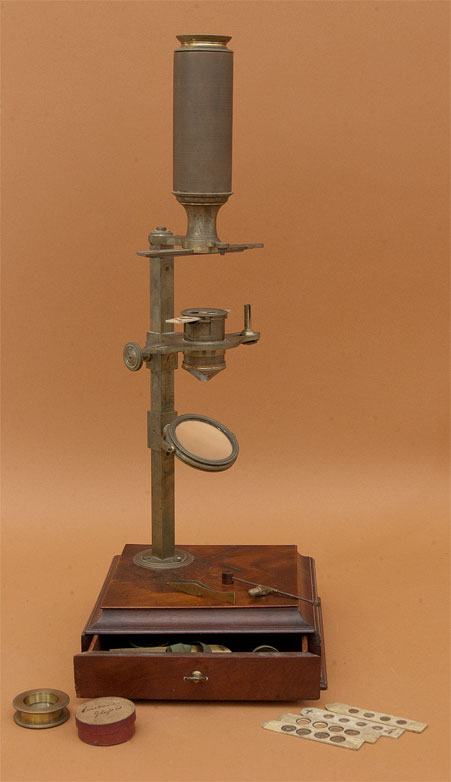 |
|||||
 |
 |
||||
 |
|||||
 |
 |
||||

At the base of the arm is a dovetail slot that accommodates an objective slider. Attached to the pillar is the two-arm stage and, further down, the illuminating mirror. A Bonanni spring-stage and a light cone are mounted to the sample stage, along with a forceps and fish-plate. The two-sided, plano-concave mirror is mounted on the 22cm high square pillar by means of a friction slide with a jam screw on the side. The pillar is attached to the square mahogany base (17.5x17.5x5.5cm) by three screws (replacements of the originals) through a circular brass plate. The base has one drawer, which contains a few accessories: live box, brass lens cases, slides, glass specimen tubes, forceps, and a pair of 3cm glass discs, one plain and the other plano-concave (the latter is called a "depression slide").
The optics consists of a two-lens eyepiece, field lens, Martin "between-lens" and objectives. Microscope No. 38 in the Golub Collection also has the Martin between-lens". All objective lenses are mounted on a slider containing six biconvex lenses. Imaging is typical exhibiting field curvature and chromatic aberration. Accessories included with this instrument are a hand-held forceps, a combination stage forceps and black/white disc, a box of depression slides, and several sample slides and glass phials. The microscope body is 14.8cm long; the entire instrument is approximately 40cm tall.
This instrument is an example of the work of George Adams, probably the younger. It is signed on the stage, in script, "G. Adams No. 60 Fleet Street, London".
Featured 03/2014